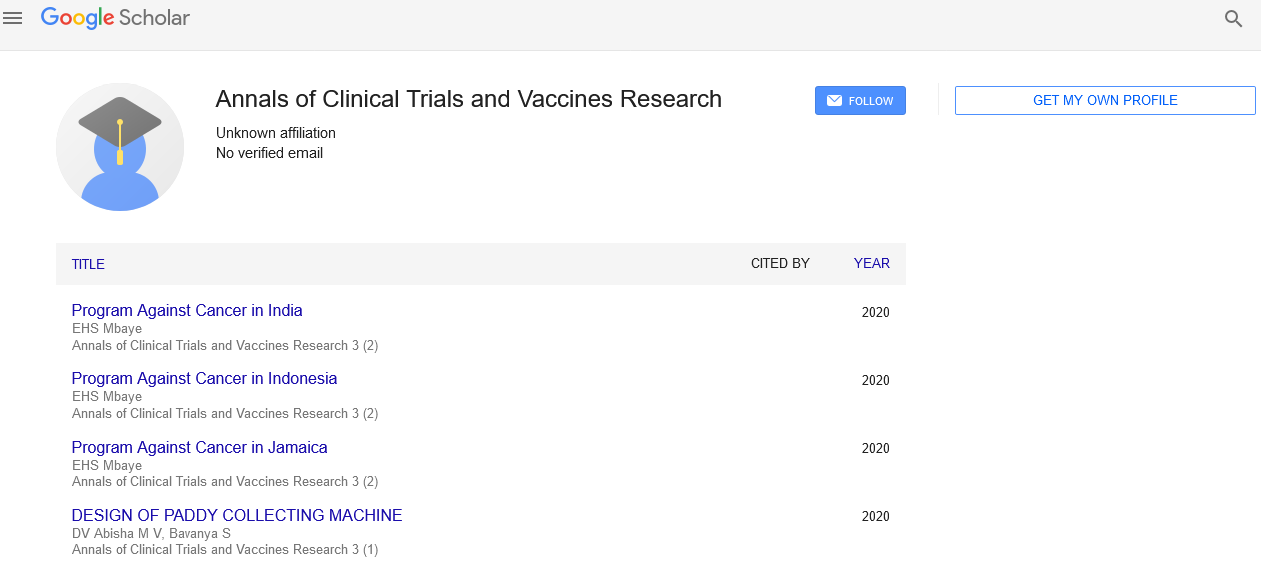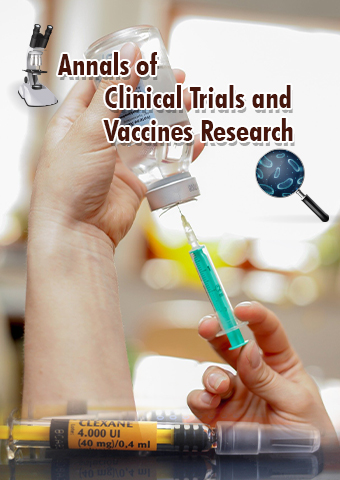Perspective - Annals of Clinical Trials and Vaccines Research (2024) Volume 14, Issue 6
Excipients Limitations: Challenges in Drug Formulation and Delivery
- Corresponding Author:
- Tom Latham
Department of Pharmaceutics, University of Murchison, Murchison, New Zealand
E-mail: Tom.latham56@gmail.com
Received: 27-Nov-2024, Manuscript No. ACTVR-24-153404; Editor assigned: 02-Dec-2024, Pre QC No. ACTVR-24-153404 (PQ); Reviewed: 16-Dec-2024, QC No. ACTVR-24-153404; Revised: 21-Dec-2024, Manuscript No. ACTVR-24-153404 (R); Published: 28-Dec-2024, DOI: 10.37532/ACTVR.2024.14(6).290-291
Introduction
Excipients are indispensable components of pharmaceutical formulations, serving as carriers, stabilizers, and agents to enhance the efficacy, safety, and manufacturability of Active Pharmaceutical Ingredients (APIs). Despite their utility, excipients come with inherent limitations that pose challenges in drug development, manufacturing, and patient safety. This article delves into the primary limitations associated with excipients, their impact on pharmaceutical practices, and potential avenues for overcoming these barriers.
Description
Compatibility issues with APIs
One of the critical limitations of excipients is their potential incompatibility with APIs. Chemical or physical interactions between the excipient and the active ingredient can compromise the stability, bioavailability, or therapeutic efficacy of the drug. For instance:
Chemical reactions: Certain excipients may degrade or interact with APIs, leading to reduced potency or harmful byproducts.
Physical incompatibility: Issues like phase separation or crystallization can arise, affecting the consistency of the formulation.
Mitigation strategies include thorough pre-formulation studies and advanced compatibility screening techniques to identify potential interactions early in development.
Allergenicity and toxicity risks
Excipients are typically considered inert, but they can trigger adverse reactions in sensitive individuals. Common excipients such as lactose, gluten, or specific preservatives may cause allergic reactions or intolerances, particularly in patients with conditions like lactose intolerance or celiac disease. Moreover, toxicity issues may arise due to:
Cumulative exposure: Prolonged use of certain excipients, like polyethylene glycol or parabens, has been linked to toxicity in high doses.
Impurities: Residual solvents or contaminants in excipients can compromise drug safety.
Solutions involve stringent quality control and the use of hypoallergenic or non-toxic excipient alternatives.
Limited regulatory guidance
Excipients face less rigorous regulatory scrutiny compared to APIs, which can lead to inconsistencies in quality and safety standards. Variability in excipient grade, source, and manufacturing processes may result in:
Batch-to-batch variability: Inconsistent excipient properties can alter drug performance.
Global regulatory disparities: Differences in excipient approval processes across regions complicate international drug manufacturing.
Efforts to standardize excipient regulations globally are ongoing but remain incomplete, presenting a challenge for pharmaceutical companies operating across borders.
Solubility and stability constraints
Some excipients fail to meet solubility or stability requirements necessary for certain formulations. For example:
Poor solubility: Excipients like microcrystalline cellulose may not adequately dissolve in aqueous or lipid-based systems, limiting their application in specific drug delivery methods.
Thermal or oxidative instability: Excipients prone to degradation under heat or oxygen can lead to reduced shelf life and compromised drug integrity.
Innovative excipients designed to overcome these limitations, such as co-processed excipient blends, are emerging but are still not widely adopted.
Limitations in advanced drug delivery systems
Excipients play a vital role in innovative drug delivery systems, including nanoparticles, liposomes, and hydrogels. However, their functionality in these systems is often restricted due to:
Incomplete release profiles: Some excipients fail to provide controlled or sustained drug release over the desired period.
Complex formulation requirements: Advanced systems demand excipients with precise physical and chemical characteristics, which may not always be readily available.
The development of tailored excipients for such applications remains a focus of ongoing research.
Patient-specific limitations
Excipients may not always be suitable for all patient groups. For example:
Pediatric formulations: Children are more susceptible to adverse effects from preservatives or sweeteners in drugs.
Geriatric populations: Elderly patients often face difficulties with excipients that affect drug disintegration or swallowing, such as large tablet fillers.
Personalized medicine is driving the demand for patient-centric excipient formulations, but this adds complexity and cost to drug development.
Challenges in developing novel excipients
While novel excipients can address many of the limitations discussed, their development is hampered by:
High development costs: The investment required for research, testing, and regulatory approval of new excipients is substantial.
Regulatory barriers: Gaining approval for novel excipients often requires extensive safety and efficacy data, discouraging innovation.
Collaboration between industry stakeholders and regulatory agencies is essential to streamline the approval process and encourage the adoption of novel excipients.
Supply chain vulnerabilities
The global supply chain for excipients is susceptible to disruptions caused by geopolitical tensions, natural disasters, or pandemics. Dependence on specific regions or suppliers for certain excipients can lead to shortages or quality issues. Risk management strategies include diversifying supply chains and fostering local production capabilities.
Conclusion
Excipients, though vital to pharmaceutical formulations, present several limitations that challenge drug development and patient care. Addressing these challenges requires a multifaceted approach, including advancements in excipient design, enhanced regulatory frameworks, and a commitment to sustainable practices. By overcoming these barriers, the pharmaceutical industry can ensure safer, more effective, and patient-friendly medications for diverse healthcare needs.

